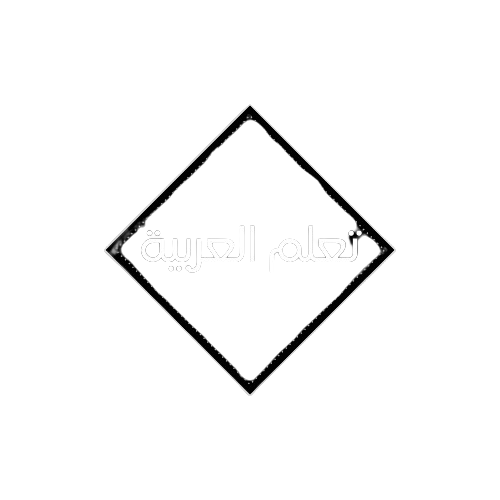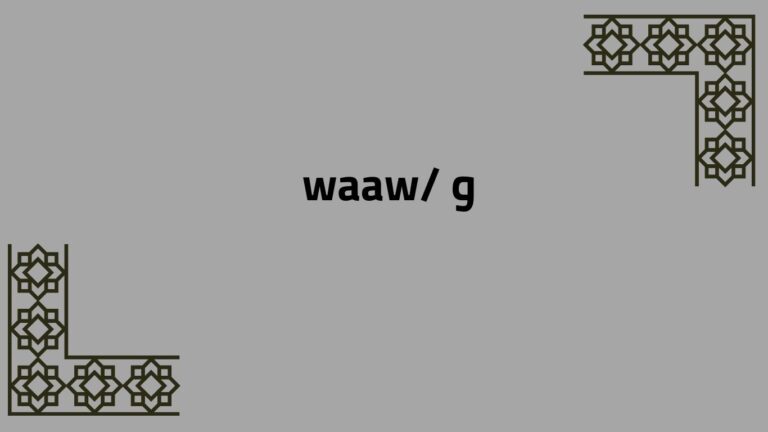The Arabic language is rich with unique characters and sounds, each playing a vital role in forming words and conveying meanings. Among these is the Arabic letter Waaw (و), which holds significance in both pronunciation and grammar. In this comprehensive guide, we delve into the intricacies of the Arabic letter Waaw, exploring its shapes, pronunciation, usage in words, and various roles within the language.
The Shapes of the Letter Waaw و
Understanding the visual representation of the Arabic letter Waaw is fundamental to recognizing it in written texts. The letter Waaw has four distinct forms:
- Terminal: This form is represented as ـو and is used when the letter appears at the end of a word.
- Middle: The middle form of Waaw, depicted as ـو, is employed when the letter is positioned in the middle of a word.
- Initial: When Waaw is the initial letter of a word, it takes the form of و.
- Isolated: In isolation, Waaw maintains the shape of و.
How to Pronounce Waaw و
The pronunciation of the Arabic letter Waaw is akin to the English letter W. However, it’s noteworthy that Waaw can also be pronounced similarly to the English vowels O and U, as it functions as one of the three long vowels in Arabic.
Examples of Words with Waaw و
To grasp the usage of Waaw in different positions within words, let’s explore some examples across initial, middle, and terminal positions:
Initial Waaw:
- وجه (Wajh) – Face
- ورقة (Waraqa) – Paper
- وطواط (Watawat) – Bat
Middle Waaw:
- ليمون (Laymun) – Lemon
- ضوء (Daw‘) – Light
- هروب (Hurub) – Escape
Terminal Waaw:
- جرو (Jaru) – Puppy
- عفو (Afuw) – Forgiveness
- نمو (Numuw) – Growth
The Letter Waaw with Harakat حركات
In Arabic, Harakat, or diacritical marks, play a crucial role in indicating vowel sounds. Let’s explore how Waaw interacts with different Harakat:
Waaw with Fat.ha فتحة:
- وَحش (Wahsh) – Monster
- ألوَان (Alwan) – Colors
- وَاحد (Wahed) – One
Waaw with Damma ضمة:
- وُجوه (Wujuh) – Faces
- وُحوش (Wuhush) – Monsters
- وُقود (Wuqud) – Fuel
Waaw with Kasra كسرة:
- طاوِلة (Tawila) – Table
- وِسادة (Wisada) – Pillow
- أدوِية (Adwya) – Drugs
Waaw with Sukuun سكون:
- هدوْء (Huduu‘) – Calm
- زوْرق (Zawraq) – Boat
- حوْض (Hawd) – Tank
Waaw with Hamza ء
In some instances, Hamza ء is combined with Waaw, resulting in unique pronunciations:
- سؤال (Su’aal) – Question
- تفاؤل (Tafa’awul) – Optimism
- تنبؤ (Tanabbo’) – Prediction
Waaw as a Long Vowel and Weak Letter
The Arabic letter Waaw serves as one of the three long vowels, along with Alif ا and Yaa ي. Known as “weak letters,” these vowels can interchange in certain grammatical contexts. For example:
- قال (Qala) – (He) said
- يقول (Yaqul) – (He) is saying
- باع (Baa’a) – (He) sold
- يبيع (Yabee’) – (He) is selling
Other Roles of the Letter Waaw
Beyond its functions within words, Waaw also serves as the conjunction “and” in Arabic:
- أنا وأنت (Ana wa anta) – Me and you
Moreover, Waaw appears at the end of verbs conjugated with هم (they), indicating plurality:
- هم قالوا (Hom qalou) – They said
The versatility of Waaw extends to its similarity in shape with other Arabic letters such as Raa ر and Zai ز, making it relatively easy to recognize and pronounce.
It’s essential to note that Waaw, along with Alif, Raa, Zaay, Dal, and Thal, does not connect with following letters in writing, contributing to its distinct appearance and function.
In conclusion, mastering the Arabic letter Waaw is integral to understanding the nuances of the Arabic language, from pronunciation to grammar and beyond. Its diverse applications make it a cornerstone of communication for Arabic speakers worldwide.


